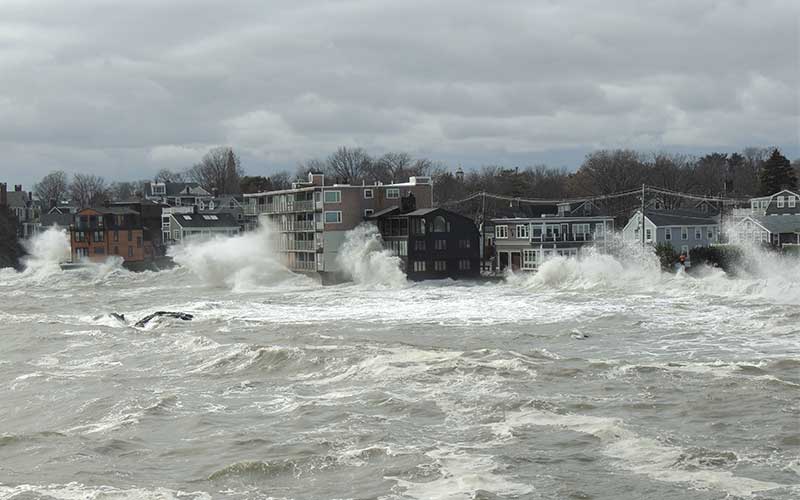Rising Rainfall Amounts In Western Massachusetts Due To Climate Change

Table of Contents
The Link Between Climate Change and Increased Rainfall in Western Massachusetts
The scientific community overwhelmingly agrees that climate change is a primary driver of increased rainfall in Western Massachusetts. Warmer temperatures, a direct consequence of climate change, lead to a higher rate of evaporation from water bodies and the land. This increased atmospheric moisture creates a greater potential for heavier rainfall events. Numerous climate models and data sets, including those from the National Oceanic and Atmospheric Administration (NOAA) and the Intergovernmental Panel on Climate Change (IPCC), support this conclusion for the region. Specific findings for Western Massachusetts show a statistically significant upward trend in both total annual rainfall and the frequency of intense precipitation events.
- Increased evaporation rates: Higher temperatures accelerate the evaporation process, increasing the amount of water vapor in the atmosphere.
- Higher atmospheric water vapor capacity: A warmer atmosphere can hold significantly more water vapor, leading to more intense rainfall events when condensation occurs.
- More frequent and intense precipitation events: Studies show an increase in the frequency and intensity of heavy rainfall events in Western Massachusetts, consistent with climate change projections.
- Changes in weather patterns and storm tracks: Shifting weather patterns and storm tracks can bring more moisture into the region, further contributing to increased rainfall.
Impacts of Rising Rainfall on Western Massachusetts
The increased rainfall amounts are having profound impacts across Western Massachusetts. The effects ripple through infrastructure, agriculture, the environment, and even human health. The escalating frequency and intensity of rainfall events are pushing the limits of our current infrastructure and natural systems.
-
Infrastructure: Flooding is causing significant damage to roads, bridges, and other infrastructure. Erosion is destabilizing hillsides, leading to landslides and further damage. The cost of repairing and replacing damaged infrastructure is substantial.
-
Agriculture: Farmers are facing crop damage from waterlogging, flooding, and soil erosion. The unpredictable rainfall patterns make it challenging to plan and manage crops effectively. This directly impacts food security and the local economy.
-
Environment: Increased runoff from heavy rainfall leads to water pollution from agricultural chemicals and other pollutants. Habitat disruption occurs as wetlands are inundated and ecosystems are stressed by the changing hydrological conditions. The health of our rivers and streams is threatened.
-
Human Health: Flooding can contaminate water sources, leading to waterborne diseases. Mold growth in water-damaged buildings poses significant respiratory health risks. Extreme weather events can also cause psychological stress and trauma.
-
Increased flooding in rivers and streams: This leads to property damage, disruption of transportation, and habitat loss.
-
Damage to homes and businesses: Flooding can cause extensive damage to residential and commercial properties, resulting in significant economic losses.
-
Disruptions to transportation and commerce: Flooded roads and bridges can severely disrupt transportation networks and impact local businesses.
-
Negative effects on local ecosystems: Changes in water flow and quality can negatively impact aquatic life and other sensitive ecosystems.
Future Projections and Mitigation Strategies
Climate models predict a continuation of the rising rainfall trend in Western Massachusetts. Future projections suggest an increase in the frequency and intensity of extreme weather events, including heavier rainfall and more frequent flooding. However, proactive mitigation strategies can significantly reduce the negative impacts.
-
Improved infrastructure: Investments in flood defenses, improved drainage systems, and resilient infrastructure are crucial.
-
Sustainable land management practices: Reforestation, erosion control measures, and sustainable agricultural practices can help mitigate the effects of increased rainfall.
-
Water management strategies: Effective reservoir management and water conservation strategies can help manage water resources during periods of heavy rainfall.
-
Community preparedness and emergency planning: Developing robust emergency plans and educating the community about flood safety are essential steps.
-
Increased frequency of extreme weather events: This necessitates enhanced preparedness and mitigation efforts.
-
Need for improved infrastructure resilience: Investing in infrastructure capable of withstanding more intense rainfall is critical.
-
Importance of community engagement and preparedness: Community involvement is vital for effective disaster response and mitigation.
-
Role of government policies and regulations: Effective policies and regulations are needed to incentivize sustainable practices and improve infrastructure.
Conclusion
Climate change is undeniably causing rising rainfall amounts in Western Massachusetts, resulting in significant environmental and societal consequences. The urgency of this situation demands immediate action. We must understand the impact of rising rainfall and learn how to protect ourselves and our communities from extreme weather. Get involved in climate action in Western Massachusetts by supporting initiatives aimed at mitigating climate change and adapting to its impacts. By understanding and addressing the challenges posed by rising rainfall amounts in Western Massachusetts due to climate change, we can build a more resilient and sustainable future.

Featured Posts
-
 Pacers Lift Suspension On Tyrese Haliburtons Father Full Story
May 28, 2025
Pacers Lift Suspension On Tyrese Haliburtons Father Full Story
May 28, 2025 -
 Community Assists Bryan County Sheriffs Office In Search For Missing Teen
May 28, 2025
Community Assists Bryan County Sheriffs Office In Search For Missing Teen
May 28, 2025 -
 Arsenal Gyoekerese Teljes Statisztika Golok Teljesitmeny
May 28, 2025
Arsenal Gyoekerese Teljes Statisztika Golok Teljesitmeny
May 28, 2025 -
 Manchester United Eye Lyons Cherki A Potential Summer Signing
May 28, 2025
Manchester United Eye Lyons Cherki A Potential Summer Signing
May 28, 2025 -
 Canadian Economy Facing 100 000 Job Losses Td Recession Warning
May 28, 2025
Canadian Economy Facing 100 000 Job Losses Td Recession Warning
May 28, 2025
